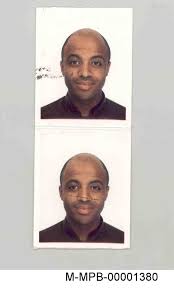A Frenchmen named Zacarias Moussaoui (who was arrested on August 16, 2001 in Minnesota and considered by many to be the “20th” 9/11 hijacker) shows up in Malaysia and stays at the same condo that Khalid al-Mihdhar and Nawaf al-Hazmi stayed at in January before they flew to the U.S. (At the time, Malaysian police surveilled the condo and shared information with the CIA about the mysterious arrival of two jihadis.)
The CIA had already concluded that the owner of the condo, Yazid Sufaat, was associated with al Qaeda, but the January trip had been forgotten by October and Sufaat was no longer being watched. He provides Moussaoui with fake identification papers in anticipation of his undertaking flight training in Malaysia. According to the 9/11 Commission Report (p. 225), Khalid Sheikh Mohammed (KSM) was dissatisfied with Moussaoui’s own terrorist plotting and recalled him to Pakistan, then directing him to go to the United States for flight training.
Moussaoui then received fake papers from Infocus Tech, a Malaysian company, stating that he was appointed Infocus Tech’s marketing consultant in the United States. He arrives in the U.S. in the beginning of 2001 and starts flight training in Norman, Oklahoma.
Moussaoui was a student at Airman Flight School until May 2001 but he is not believed to ever have actually crossed paths with any of the 9/11 hijackers. His initial arrest a month before 9/11 was for immigration violations, not terrorism related. Had the FBI or the intelligence community (IC) been able to “connect the dots”—al Qaeda connections, training in Afghanistan, direction from KSM, the same condo in Malaysia, flight school in the U.S.—perhaps the 9/11 plot could have been unraveled. The conventional history of 9/11 is that legal constraints impeded the sharing of information and that structural deficiencies in organization were to blame for very narrow mistakes made in Washington and around the IC. The truth is that incompetence, sloth, and disbelief masked the connections, only discovered after 9/11.
